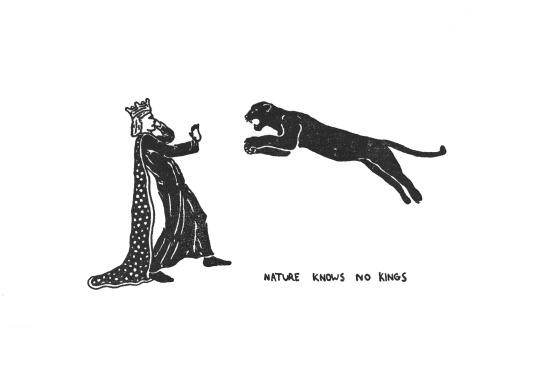Text


Friendly reminder to follow ya boi on insta and twitter in case this site goes to heck
52 notes
·
View notes
Text
“Am I repressing trauma or can I genuinely not remember my childhood” a novel by me
61K notes
·
View notes
Photo
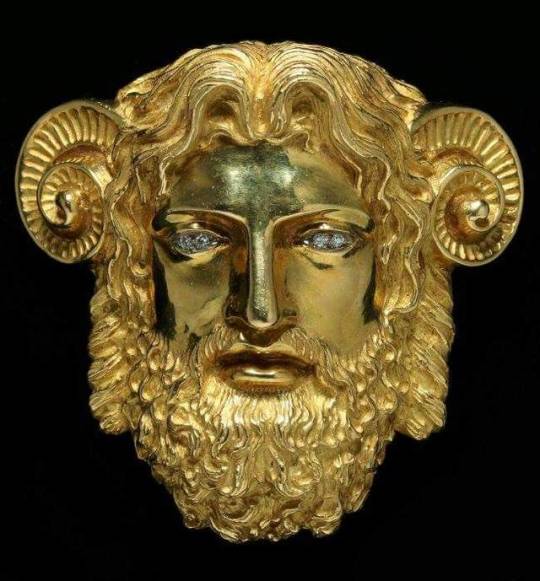
Zeus Ammon, the merging of the Greek god Zeus with the Egyptian god Amun, was worshipped widely across the classical world from Thebes, Delphi, and Arcadia, through to Egypt and Libya in the form of a ram’s head, or a god with ram’s horns.
Alexander the Great was once declared “The Son Of Ammon” by the Oracle of Delphi.
18 karat gold and diamond brooch of Zeus-Ammon (Mid-20th century, Wander & Co., Paris)
2K notes
·
View notes
Photo





Abstract Fluid Paintings by Mark Chadwick
“In my current series of fluid paintings, the paint is manipulated in a number of different ways each driven by ideas surrounding process, materiality and chance encounters. The unique display of forms and colours are brought together by the artist’s hand but manipulated through the use of machines or natures forces. Some paintings are spun or shaken while others rely upon reactions between materials or gravity to allow the painting to almost form itself. The paintings are built up of many layers of paint, each creating it’s own flowing abstract surface left open to interpretation by the viewer.“ - Mark Chadwick
2K notes
·
View notes
Note
hi! do you mind explaining the tradition behind Mari Lywd?
I love this ask because it’s such a polite way of going EXPLAIN THAT POST ELANOR
EXPLAIN YOURSELF
EXPLAIN YOUR PEOPLE
I’m not sure if you’re after the history of the thing, or the actual practice of it, since ‘tradition’ could cover either - so, I’ll give you both, and hopefully your answer will be in here somewhere. I will also include more Frightening Images of the Mari Lwyd because you can never have too many horrifying photos of ornery skull-masked winter horse demons to scare the tits off you.
Okay, so. The Mari Lwyd.
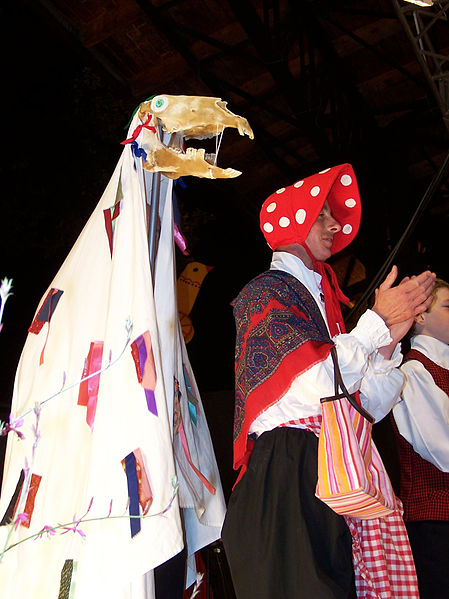
Now, the first concrete recorded incidences of the Mari are from the late 1700s/early 1800s, but as with a lot of Welsh history, that’s misleading. We didn’t write a lot of our own shit like this down for much the same reason that Egypt never mentioned where to find Punt, and the English didn’t generally travel into Wales much if they could help it. Given that it seems to fold into a lot of other older traditions, though (the Hooded Animal, the Mast Beast, etc), and those have pre-Christian roots, I believe there’s a theory that it might have its roots in worshipping Rhiannon, the Welsh version of Epona, the pan-Celtic horse goddess. But there’s no way to be sure.
The meaning of the name is disputed. It’s generally accepted to mean “Grey Mare”. For a while some people thought it meant “Holy/Blessed Mary”, as in, y’know, the Virgin Mary, but this is no longer accepted because
“Llwyd” means grey, not white, and “gwen” is the colour normally used to also mean pure or holy; grey would be more likely to mean venerable/wise, which the Mari Lwyd ain’t;
I think there’s reference to ‘Mari’ being used for ‘Mary’ (instead of ‘Mair’) in the Black Book of Carmarthen, so at least since the 14th century, but that was likely only by poets - there’s no record of common folk using it before the Protestants came and reformed everything, so it seems unlikely that it could have been the original name; and
As far as I am aware there is no record of the religio-historical figure of the Virgin Mary mounting the donkey’s head on a stick and hammering down the door to the inn with a half-empty bottle of gin in one hand while scream-singing insults at the innkeeper so he’d give her cheese.
So, it’s generally accepted now that the connotations with Christian Marian symbolism are part coincidence and part encouraged among the clergy post-Reformation so that everyone could keep getting blind drunk with a horse’s skull and calling each other a willy. Plus, both Ireland and the Isle of Mann have very old hooded horse traditions too, called the Láir Bhán and the Laare Vane in Irish and Manx respectively. Both meaning, surprise surprise, the “white/grey mare”. Given that Wales and Ireland had a lot of historical interaction, this seems like more than coincidence.
Plus, you know, it is kind of a grey mare. Bones are white.
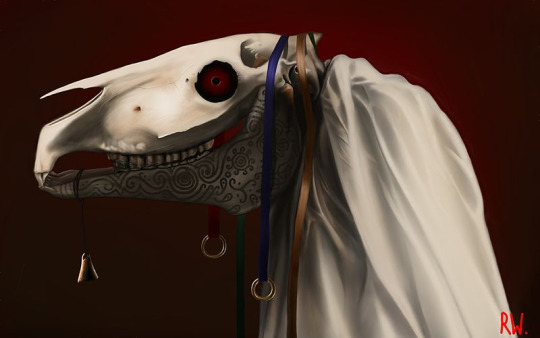
It did have other names in some places, mind - I think Carmarthenshire had some weird name for it, like Y March or y Gynfas-Farch, but you mustn’t ever listen to people from West Wales because then there would we be? Calling woodlice ‘pennysawls’ and claiming the word “Wi’n” is an acceptable variation of the verb “to be”, that’s where.
Anyway. Once upon a time, this was seemingly a mid-winter celebration in Wales, which then became a Christmas celebration until the Church went “You’re doing WHAT” and it became New Year instead. But, it did vary when different villages would do it. Some would do it on New Year, some at Christmas, some in that weird week in between when you don’t know if the bins are going out or not… You get the idea. These days, it’s New Year, as a rule.
Now, Europe does have a lot of varying traditions of doing this shit - google ‘mast beast’ for exciting photos. But usually, the beast is made by someone bending over beneath the sheet to make it look, you know, like the beast they’re mimicking. The Mari Lwyd stands out because, alone of all of them, she stands up straight, and is seven feet tall. She is the tallest of all the mast beasts. In a country where the average female height is 5'4", and men not much taller, that makes her fuck-damned enormous.
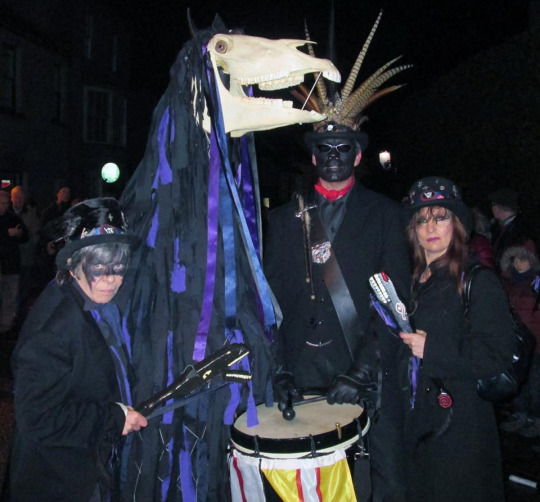
So, with that out of the way, let me tell you how it goes!
Traditionally, making the Mari is an important part of the whole thing - most villages would have a set skull they’d use, like, but the decoration was a week-long community affair, because as we all know, it would be creepy if you just stuck a skull on a pole oh my god. You have to put ribbons and glass eyes on it! That stops it being creepy! Obviously!

(Also, as a side note, battery-powered fairy lights have been a gift to the Mari Lwyd.)
youtube
The skulls, incidentally, were almost always from a beloved village horse who had at some point died at a ripe old age, and then whose skull was taken to live on as the Mari. Most villages knew their names, decades later. Down the Gower peninsula I think there was one account, mind, that they used to bury the skull for the rest of the year, and just dig it up in time for the Mari. But most kept it in a cupboard, like. Next to the sugar. I dunno. An important point, though - the skulls are also rigged so the person inside can snap the jaw, and incidentally, few things in this infinite and wondrous existence are as creepy and low-key primally unnerving as hearing ten of these things around you snapping in the dark, just btw, just fyi.
Anyway; you’ve spent a week decorating! (Although these days they’re kept pre-decorated.) What now?
The Mari party gathers at about midday. That’s the Mari herself, plus others - it varies who, but classically, I think they dressed up as Punch and Judy characters, those being the mischievous comedy extravaganza of the day. Then they start at one end of the village and go to the first house, where they sing Cân y Fari. That’s a bit like yelling ‘Trick or treat’, except rather than asking for sweets, they’re after delicious alcohol and cheese (side note: Wales’ relationship with cheese goes beyond Peak White Person and out the other side into What Is Wrong With You People. We have myths and folklore about it. It is Very Important.)
Now, the house holders do not want to give away their delicious alcohol and cheese, and so at this point, they begin something called the Pwnco (the ‘w’ is pronounced like the ‘oo’ in ‘book’, while the ‘o’ is short like in ‘hot’.) The Pwnco is, like… sort of like a rap battle? But sung. But that’s the idea. It’s beautifully poetic, and almost always opens with the same very nice verse, to whit:
Wel dyma ni'n diwad (Well here we come)Gyfeillion diniwad (Innocent friends)I ofyn am gennad (To ask leave)I ofyn am gennad (To ask leave)I ofyn am gennad i ganu (To ask leave to sing)
which you can hear a bit of here; I filmed that in Llangynnwyd. But, it’s very much a “So’s your FACE” type of thing. The householders tell the Mari to get straight to fuck, and then the Mari responds in kind. And they go back and forth until one side loses.
Now, if the Mari loses, she goes to the next house. But if the householders lose, they have to let her in and give her their delicious alcohol and cheese. IMPORTANT STEP, HOWEVER: if they have a bare ounce of sense between them, they first make her promise to behave before letting her past the door. Because if they don’t, HA HA all hell breaks loose, and the party do as much mischief as they can, like smearing ash on your walls and stealing your goats and mixing your white laundry in with your colours and hiding your drawing tablet pens. It is a Riot.
Anyway, once done, they leave the tattered ruins of your former house, go to the next house, and start again. More delicious alcohol and cheese!
It all got banned by the Welsh Non-Conformist Church of No Fun ever, because rival Mari parties would get blind drunk and then fight each other in the streets. It started to die out in the 50s, though some smaller villages kept it going - Llangynnwyd never even stopped. And in the last two decades it’s started making a resurgence in places like Brecon, Llantrisant, etc - tonnes of places in the belt between Vale and mountains, really, which makes me think it’s because the Folk Museum is in St Ffagans.
But Chepstow do a modern twist - the town is right on the border with England, so they do a festival of Welsh Mari Lwyd and English morris dancing combined in mid-January each year. Turns out, every goddamn Mari in the country comes to it, too, which is why this year I got to see 24 Mari Lwyds. I had NO IDEA. So, so many Maris…
It also used to sometimes get mixed in with other festive cheese-begging traditions like Calennig, but it is pretty much separate. As a final question: why do it? Well… we dunno. The purpose of the uppity skeletal horse beast is unknown at this point. Like I say, it may well have been a Rhiannon thing; given the way it got folded into some Christian things post-Reformation, it may have absorbed some form of fleeing-on-a-donkey-to-give-birth stuff. It’s hard to even nail down distribution patterns. But, something I find interesting about its distribution is that it was predominantly done in areas that either mined, smelted or sold minerals a lot. Make of that what you will.
And, that’s the Mari Lwyd.
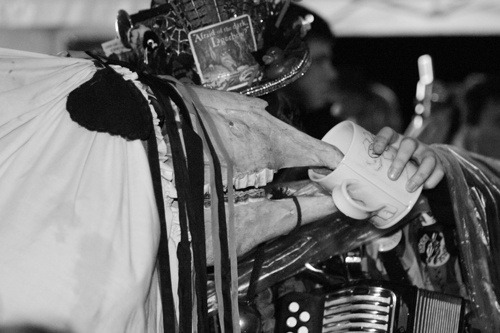
16K notes
·
View notes
Text
Considering my sideblog got obliterated and a buncha lovely people just vanished, himmie up on twitter and insta as I'll prolly be here less now x


Friendly reminder to follow ya boi on insta and twitter in case this site goes to heck
52 notes
·
View notes
Photo

Adam Ant (Adam & The Ants) from Flexipop (Issue #6, 1981)
252 notes
·
View notes
Text
idk if y’all americans and that know this, but in Australia instead of snow at christmas we get these lil shiny bugs everywhere and they’re attracted to the christmas lights and we call them christmas beetles

and despite being australian they don’t bite or anything they just crawl around on your hand and it’s such a good and pure feeling and yeah
114K notes
·
View notes






